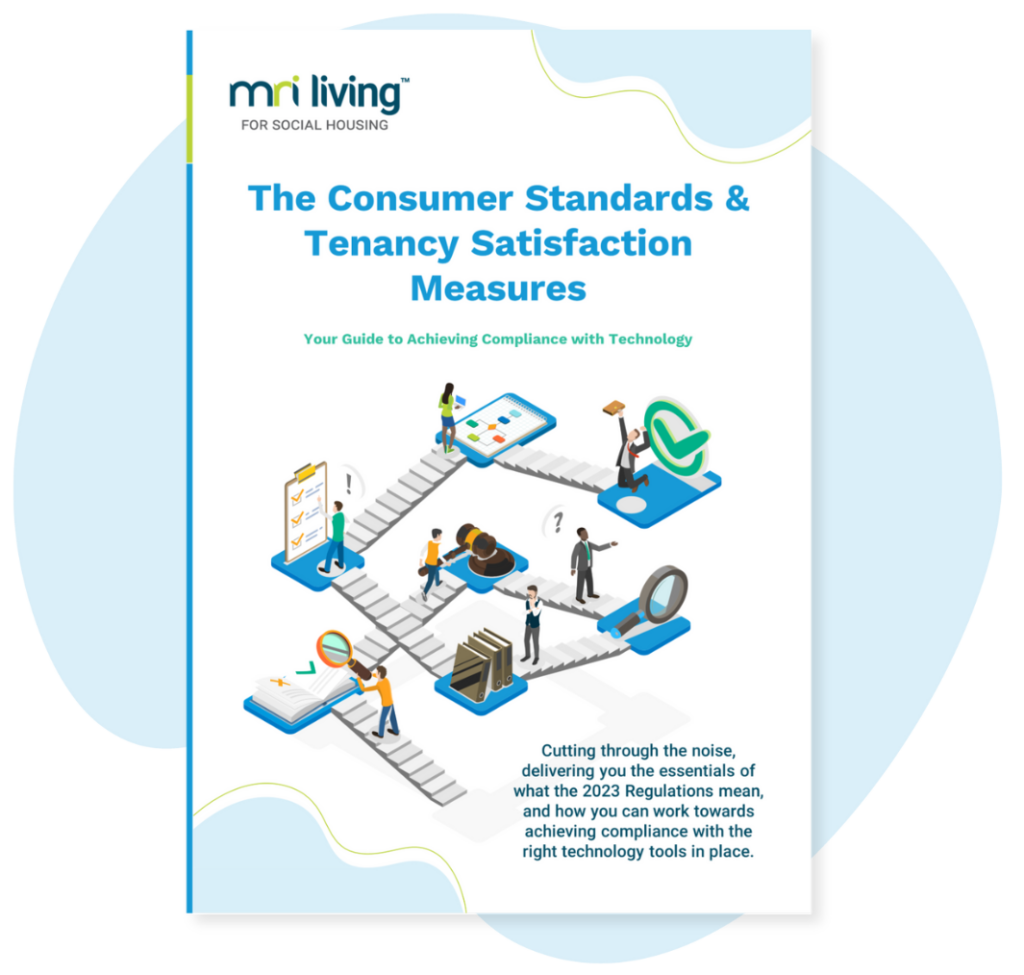Putting the resident first
Operating models for delivering services are being propelled years into the future for housing teams. By necessity, delivering customer-centric social housing services from home and 24/7 direct-to-customer communication channels have become the norm. These services can be utilised for ensuring flowing dialogue between housing provider and resident that manifests itself in more meaningful resident engagement.
The change in operating environment for teams over the past twelve months means that digital access for residents has been implemented with urgency rather than necessarily through a digital transformation strategy. According to McKinsey, the share of digitally-enabled products has accelerated by seven years due to the Covid-19 pandemic.
Amidst this change, tenancies have still begun and ended and repairs have needed to be arranged. In the past year, residents have become much more familiar and comfortable with self-service. When stay at home orders were announced, Phil Riley, an independent IT consultant speaking on the MRI Social Housing webinar, ‘Social Housing From Home: 2021’, found that organisations in the sector that had already invested in their digital offering reaped the benefits and felt less impact from the change to working environment than those who had not.
When the pandemic struck, resident contact became the biggest challenge, with face-to-face meetings and support an impossibility. This was against a back-drop of residents becoming increasingly worried about the financial impact of the lockdown. The majority of housing providers have done an excellent job in remaining connected with vulnerable residents and in attempting to allay fears. However, these challenges have unsurprisingly, put housing teams under huge stress, with longer working hours and mounting costs of service delivery.
According to Phil Riley, during the height of the pandemic residents began making complaints to housing providers about impossibly long call queues. A trend that followed was the almost wholesale move to text channels such as SMS, webchat and social media. Many providers, small and large, are only now coming to grips with what is needed in the medium-term to entrench these methods in their service delivery and ensure the best outcomes for all residents.
However keen and good the sector gets at deploying new technology, we must never lose sight that it is about the residents getting in contact. It is of strategic importance to craft and deliver strong comms campaigns that bring customers along the journey.
Phil Riley, Independent Social Housing Technology Consultant
Bringing service to the sofa
In the face of a more pressing need to engage with alternative communication methods, many residents have grown in confidence around using them as a mode of communication with their housing provider. It is imperative however, that no one be left behind; generational gaps and access to devices must to be taken into consideration with service delivery.
In the incredible rush to provide remote services, many systems and channels have been established in a reactive way. Now is the time to step back, see what has worked and understand from residents how easy they find completing tasks on a day-to-day basis, evaluate which devices they use and whether tools like a single sign-on would suit their needs better.
James Massey, Strategy Director at MRI believes that social housing is in a unique position within the wider housing sector: “Organisations hold large amounts of data about their properties and people. Harnessing this data can pinpoint areas for improvement that can directly impact residents’ lives. In the difficult months ahead, some residents will need increased levels of support. Efficiently managed data and comprehensive self-service for business-as-usual activities is a necessity to assign help to where it can make the largest difference.”
Once an organisation understands who is on the sofa, service delivery teams can be supported and trained to deal smoothly with enquiries and painlessly assist those who might need extra help from home. “Effective data management enables organisations to build responsive services. Social housing residents, like us all, are used to real-time updates, targeted content and rapid customer service; their housing providers should be no different.”
The Regulatory Environment
In the coming months, the expectations placed upon housing providers will become more demanding; to communicate their work with residents; gather their opinions on the organisation’s performance and listen to their ideas on how to improve services. Last November’s social housing white paper outlined that, “Stronger resident engagement by landlords will give residents a clearer voice so that they can hold landlords to account.“ This will be challenge enough, however it now seems likely that providers will need to engineer these consultations and communications mainly in the digital sphere.
Some housing providers are building digital engagement spaces to encourage communities to bring their presence online. Sutton Housing in their 2019/2021 Resident Engagement Strategy, announced a 24/7 resident portal for services as well as digital information in communal areas of buildings, giving real-time updates about events, services and repairs.
Establishing meaningful resident engagement can build trust in an organisation, reduce complaints and boost satisfaction scores. The London Assembly Report, ‘Hearing resident voices in social housing’ found that the social housing sector is proactively leading the charge in engaging residents in new ways.
Case Study: Engaging Residents with Digital Tools, Optivo Housing
Optivo aimed to reach out to residents not normally interested or able to take part in more traditional forms of resident engagement, like community groups or scrutiny panels. In order to do this, they built new channels for digital engagement, ultimately gaining 15,000 responses through their online engagement hub, which represented a 75% increase in participation on the previous year. A notable increase was a 35% rise in engagement rates from those under 35.
The future of digital engagement
Organisational culture and buy-in has been named by the UK Collaborative Centre for Housing Evidence as the most important element for achieving meaningful resident engagement and open communications. Six years of data from a large housing association showed a ‘strong and intensified correlation’ between involving residents in decision making and planning, and improved financial performance.
In the coming years, to achieve the levels of resident engagement that will help an organisation thrive and comply with incoming regulations, many day-to-day processes need to become digitally enabled. This resident self-service is expected to release housing teams from these everyday tasks, meaning that they can work alongside residents to provide better, more-sustainable tenancies, enhanced services and thriving communities.
Hearing and listening to the voice of tenants and communities has never been more important. We have an opportunity now to make far-reaching and innovative change to how we deliver engagement. The key will be to put in place engagement practices built on mutual respect, trust, accountability and transparency. I am heartened to see the sector embracing the opportunities that digital can bring to encourage and enable more people to get involved, facilitating conversations quicker and in different ways.
Jenny Osbourne, MBE TPAS Chief Executive

The Consumer Standards and Tenancy Satisfaction Measures: Your Guide to Achieving Compliance with Technology
Cutting through the noise, delivering you the essentials of what the Consumer Standards and Tenancy Satisfaction Measures 2023 Regulations mean, and how you can work towards achieving compliance with the right technology tools in place. New regulatio…

